Student scientists work to help all of us survive a warmer world
Climate change is here to stay and young scientists are finding ways to cope
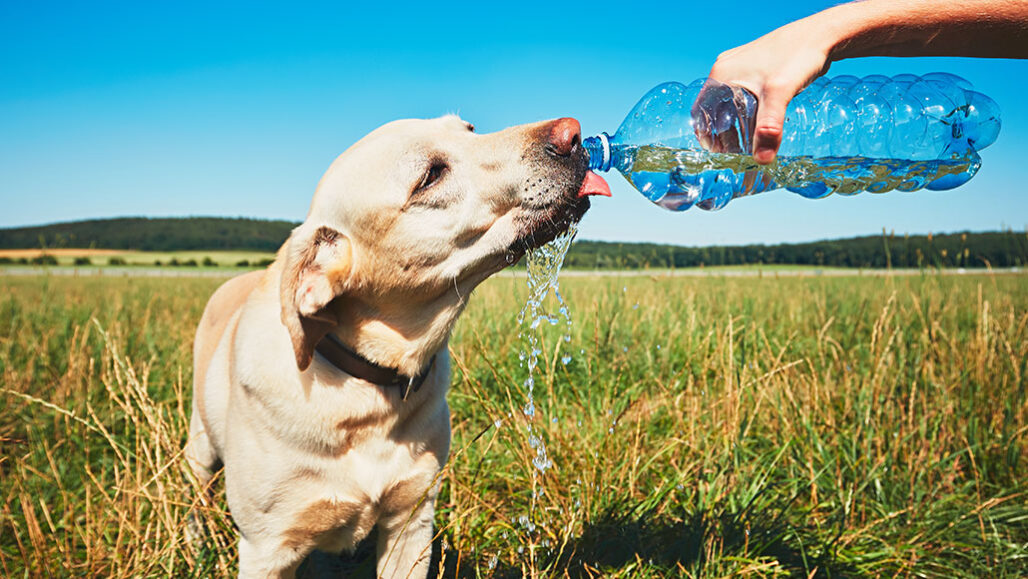
Climate change is going to make some places unusually warm and desperate for water while others get flooded. Teen scientists are trying to find ways to adapt to this changing world.
Chalabala/iStock/Getty Images Plus
This has been a year full of the unexpected. COVID-19 has forced people indoors, closed schools and killed more than 220,000 Americans. Besides the pandemic, there have been hurricanes, wildfires, protests and more. Behind some of these upheavals, though, is an unfolding event that shows no sign of stopping: climate change.
Climate change is contributing to many of the disasters that have been changing lives around the world. Here we meet students who have been using science to help people better understand and deal with the effects of our changing climate.
Their research helped place them among 30 finalists at the 10th Broadcom MASTERS. MASTERS stands for Math, Applied Science, Technology and Engineering for Rising Stars. It’s a research program open to middle-school investigators. Society for Science & the Public (which publishes Science News for Students) created the event. Broadcom Foundation, headquartered in Irvine, Calif., sponsors it.
Some of the kids developed systems to help keep people safe as climate change makes life more unpredictable. Others developed ways to save precious resources, such as water and oil. And one student applied lessons from a study done in a cereal bowl to model melting glaciers.
Fighting fire and flood with science
Like many Californians, Ryan Honary, 12, has personal experience with wildfires. A student at Pegasus School in Huntington, he was with his father at an Arizona tennis tournament when he saw wildfires raging across his home state on TV. “The hills that were burning looked just like the hills behind my house,” Ryan recalls. “I called my mom and asked if she was okay.” Once he knew that she was, he asked his dad why wildfires got out of control so often. “We’re planning to send people to Mars but we can’t detect wildfires,” Ryan says.
That’s when Ryan decided to create a way to detect wildfires early — before they get out of control. He linked together a series of Raspberry Pi computers. Some of these tiny units were fitted to detect smoke, fire and humidity (how much water is in the air). Their sensors relayed data wirelessly to another Raspberry Pi. This slightly bigger computer served as a mini meteorological station. He estimates that each sensor would cost around $20, and the mini stations would cost $60 each.
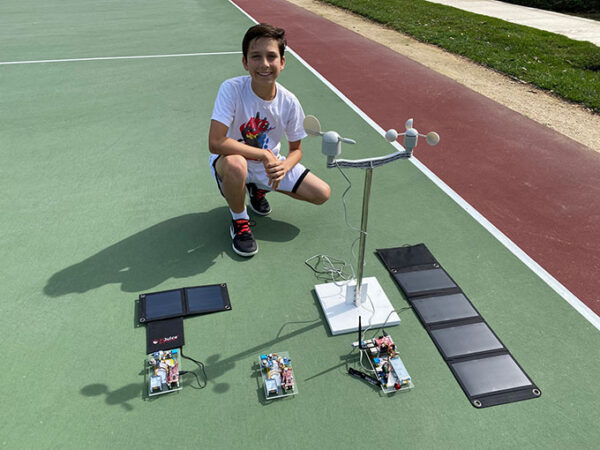
Ryan brought his entire system to a park and tested it by holding the flame from a lighter in front of each sensor. When these sensed a fire, they informed the detector. It then alerted an app that Ryan built for his phone. While creating that app, Ryan talked with Mohammed Kachuee. He’s a graduate student at the University of California, Los Angeles. Kachuee helped Ryan use machine learning to train his app with data from the large 2018 Camp Fire. The app took lessons from how this fire had traveled over time. Using those data, the app “learned” to predict how flames at future events might spread.
Someday, Ryan hopes his sensors might be deployed throughout his state. “Five of the worst fires in California just happened in the last three months,” he notes. “So it’s pretty obvious that global warming and climate change is just making the fire problems worse.”
Stronger hurricanes are another symptom of a warming climate. Heavy rain and storms can produce sudden floods that appear and disappear locally within minutes. One such flash flood provided a memorable experience for Ishan Ahluwalia, 14.
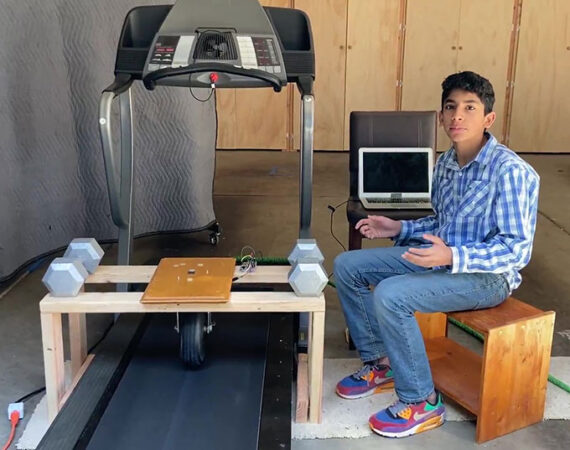
It was a rainy day in Portland, Ore. “My family was driving on a highway,” recalls the now ninth grader at Jesuit High School in the city. “We were driving at the speed limit.” But a sudden sheet of water on the road made the car swerve. It was hydroplaning. This occurs when water builds up beneath a tire, he explains. With no friction, the tire slips “and the car slips as well.” This can lead to accidents.
Ishan was surprised that there was no system in a car to sense when tires were about to slide. So he went to his garage and put a small tire on a treadmill. He hooked the wheel up to a computer with an accelerometer inside. As the treadmill moved and the wheel rolled, he ran water down the belt to make synthetic rain. The computer then measured the friction between the wheel and the belt as differing amounts of rain fell.
Then, like Ryan, Ishan used machine learning. “In middle school, my science teachers really helped me get the project off the ground,” he says. But the next step was to talk to an engineer who works at nearby Oregon Health and Science University. With that engineer’s guidance, Ishan trained the system he built to associate different types of weather with how much water was on the road. It could then link those water levels with a car’s ability to maneuver.
If installed in a car, Ishan says, this system might offer a notice in green, yellow or red to warn people when they faced a risk of losing control of steering or braking. It also could help people drive more safely as heavy rains and flooding become more common.
Saving water and stopping snails
Just as it’s possible to have way too much rain, it’s also possible to have far too little. Pauline Estrada’s home, in Fresno, Calif., is in one such drought-prone region. The eighth grader at Granite Ridge Intermediate School saw nearby farmers watering their fields. In dry regions like hers, no drop would be wasted. So she sought a way to help growers predict when their plants truly needed water. Right now, Pauline says, farmers measure soil moisture to see if their plants are thirsty. But, she notes, that doesn’t show if the plant itself is suffering.
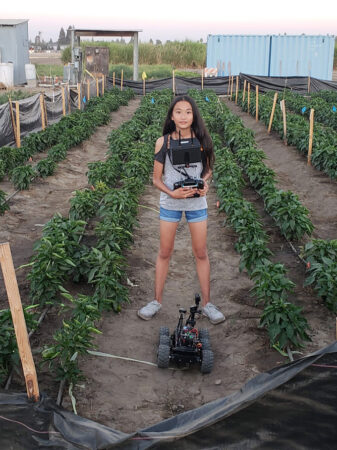
Luckily, this 13-year-old had a rover lying around. She had built the robot vehicle from a kit. The teen also built an infrared camera. It makes images at light wavelengths the human eye can’t see. Infrared light often is used to map heat. A hotter plant is a drier plant, Pauline explains. When a plant has enough water, she says, “it lets water go through its leaves.” This cools the air on the surface of the leaf. But if the plant is dry, it will hold in water, and the leaf surface will be hotter.
Pauline attached the camera to her rover and drove it around pepper plants that she grew in pots. Sure enough, her roving camera could spot when these plants needed water. Then, with the help of Dave Goorahoo, a plant scientist at Fresno State University, she ran her rover around pepper plants in a farm field.
Her Infra-Rover currently scans only one plant at a time. Pauline hopes to scale up her system to observe many at once. She also plans to work on a system to predict when hot plants will need water — before they get parched. “It’s important to not waste water during climate change,” she says. Water them when they need it, she says, not before.
Once those crops are grown, they’ll need to be shipped to hungry people the world over. Many will travel on huge cargo ships powered by large amounts of fossil fuels. In fact, cargo ships account for three percent of all carbon dioxide emitted into the air each year.
Those ships would burn less fuel if they encountered less friction at sea, known as drag, reasoned Charlotte Michaluk. The 14-year-old is now a ninth grader at Hopewell Valley Central High School in Pennington, N.J. A scuba diver since sixth grade, Charlotte knew that one source of drag was stuff growing on the hulls of ships. Barnacles, snails and other organisms contribute to this biofouling. Their lumpy bodies increase drag, making ships work harder and burn more fuel.
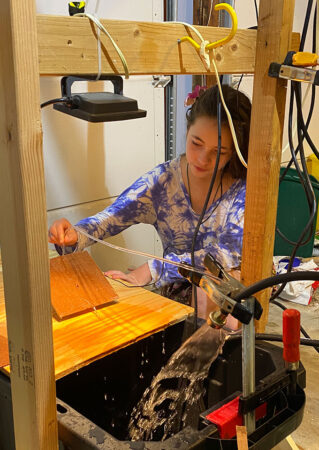
Charlotte opted to design a new, more slippery coating for a ship’s hull so that fewer creatures would be able to hitch a ride. She tested different materials in the aquatic version of a wind tunnel. Charlotte loves woodworking and crafting. “My family knows where I’ve been in the house based on my trail of crafting materials,” she says. She designed a ramp that she could coat with different materials. Then she measured the force of the water flowing off different metal and plastic coatings to calculate their drag.
One material proved really good at reducing drag. Called PDMS, it’s a type of silicone — a material made of chains of silicon and oxygen atoms. Charlotte also tested some surfaces that had been based on mako shark skins. The sharklike drag-limiting scales, known as denticles, worked well at cutting the ramp’s drag.
But would they also prevent other creatures from latching on? To find out, Charlotte went hunting for small bladder snails in local streams. She put the snails in her water tunnel and observed how well they were able to cling to different surfaces. PDMS and the fake mako skin prevented snails from sticking.
“Biofouling is a really big problem,” she says. Affected ships will consume more fossil fuels. And that, she explains, “contributes to global warming.” She hopes her discoveries might someday help ships slip more easily through the water — and save fuel.
Eyes on ice
It might seem like a kid from Hawaii wouldn’t spend a lot of time thinking about glaciers. But Rylan Colbert, 13, sure does. It started when this eighth grader at Waiakea Intermediate School in Hilo first saw news of an experiment on how dams might collapse. Those tests had studied how piles of rice cereal collapsed in milk.
The cereal was puffed rice. But Rylan was soon thinking about ice. “I think I had shaved ice [a popular treat in Hawaii] the day before and I was thinking about it,” he says. “And that led me to thinking about glaciers” and how their collapse might affect polar regions.
Rylan decided to study if shaved ice would collapse into water as the rice cereal had in the study he had read about. For a little guidance, he emailed Itai Einav. He’s a coauthor of the rice cereal study at the University of Sydney in Australia. Einav emailed back and became “kind of my mentor,” Rylan says.
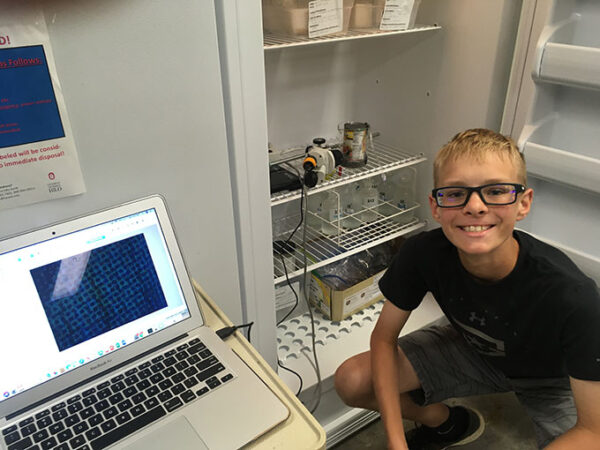
Using a refrigerator in his father’s lab at the University of Hawaii, Rylan filled beakers with a layer of gravel. Then he added a layer of shaved ice to serve as his model glacier. “The density of the shaved ice was about the density of freshly fallen show,” he says. That’s really important, he says; it simulates how glaciers develop. “That’s the start of the process.”
He set a microscope on its side in the fridge to monitor exactly what happened. “To simulate global warming, I pumped water under the shaved ice and it compacted,” Rylan notes. He tested water pumped in at -1° Celsius (30° Fahrenheit) and then again at 8 °C (46 °F). That warmer water simulated a warming ocean.
Ice with warmer water below it compacted seven percent faster than ice atop very cold water, Rylan showed. He hopes his research might help people understand how glaciers form (or don’t), as the world warms.
Doing more scientific research around climate change is key, he believes. Eventually, he says, “it’ll hit home with somebody and they’ll say, ‘Hey, let’s stop this.’”
Pauline hopes that more research also will prompt more action. “We should take all measures to prevent [climate change] as much as possible,” she says. “At the rate it’s going, it’s going to destroy the planet.”
And going for the win
Charlotte Michaluk was among the top winners in this year’s competition. For her work, she took home a $10,000 Talent Award for demonstrating excellence in science, technology, engineering or math (STEM). This award also recognizes her for exhibiting the leadership and technical skills necessary to excel in the 21st Century STEM workforce and to “build a better community for tomorrow.”
Ishana Kumar took home the top $25,000 Samueli Foundation Prize. The 12-year-old from Chappaqua, N.Y., studied whether a type of eye fatigue affects someone’s perceptions of “imaginary colors.” Her award also recognizes her leadership, collaboration and critical-thinking.
Other $10,000 winners in this year’s contest included:
- Julian Olschwang, 14, of Los Angeles, Calif., who developed a low-cost glove that could convert sign language to text or speech.
- Kai Vernooy, 14, of Niskayuna, N.Y. For his qualifying project, Kai studied gerrymandering and how to draw voting districts that are more fair.
- Zoe Weissman, 14, of Plantation, Fla. Her qualifying project sought to identify natural alternatives to opioids pain killers.







